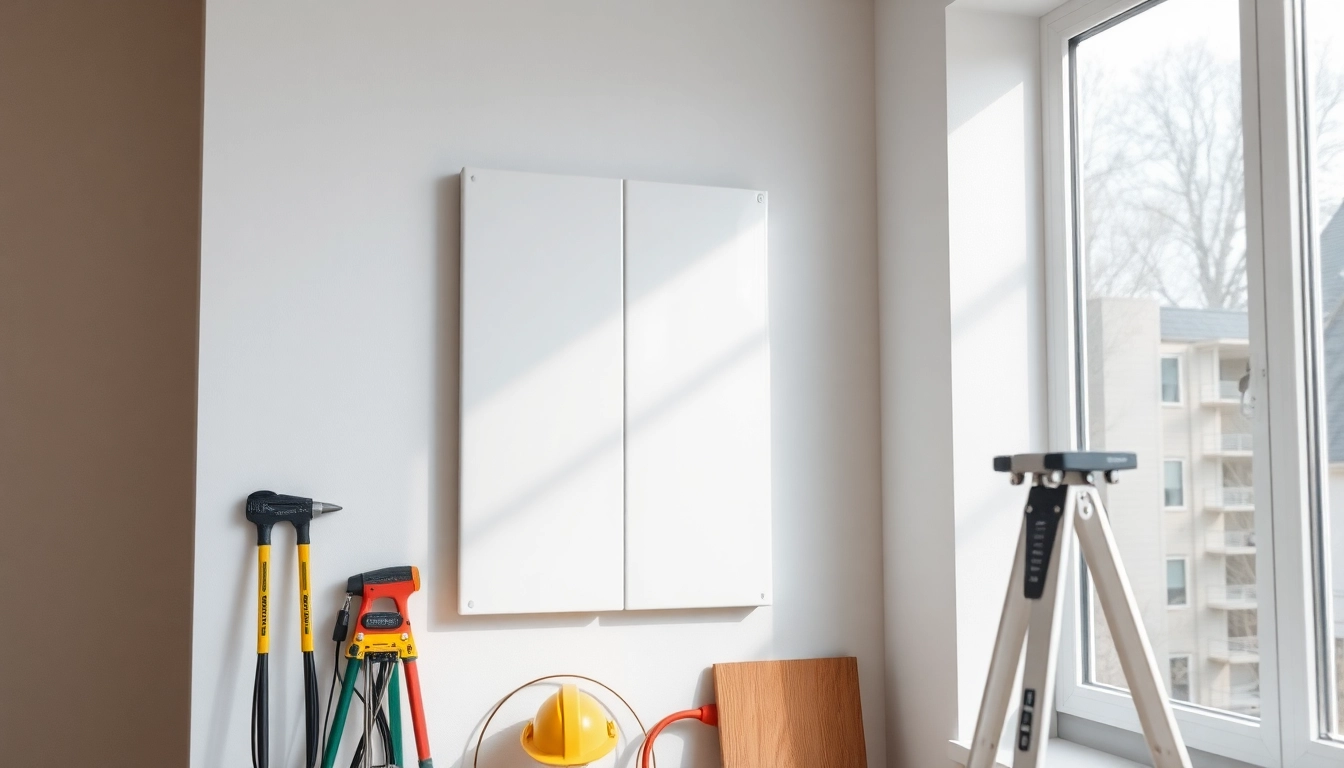What is an Electrical Panel?
Definition and Components
An electrical panel serves as the central hub of a home’s electrical system, controlling the distribution of electricity throughout the property. Functionally, it connects the main electrical supply line to branch circuits that power various devices, appliances, and lighting fixtures.
Key components of an electrical panel include:
- Main Breaker: This is usually located at the top of the panel and is responsible for disconnecting the entire electrical service to the home.
- Circuit Breakers: These small switches protect individual circuits by interrupting the flow of electricity when an overload or short circuit occurs.
- Bus Bars: These are metal strips that distribute electricity from the main breaker to the various circuit breakers.
- Grounding System: This provides a safe pathway for electrical fault currents to reduce the risk of electrical shock or fire.
Types of Electrical Panels
Several types of electrical panels are available, each suited to different needs:
- Main Breaker Panels: Common in residential homes, these panels feature a main switch that controls power to all circuits.
- Subpanels: Used to extend electrical service to a specific area of a home (like a workshop or garage), subpanels allow for more circuit breakers without requiring a larger main panel.
- Smart Panels: Advanced panels that offer features like remote monitoring, energy analytics, and integration with smart home systems.
How Electrical Panels Work
The electrical panel functions by controlling the flow of electricity to various parts of the home. When power arrives from the utility company, it enters the panel and passes through the main breaker, which can cut off the power in case of an emergency. Next, it flows to circuit breakers, which divide electricity into individual circuits. Each circuit breaker protects a specific line, responsible for powering areas or specific appliances. If a circuit becomes overloaded, the breaker will trip, cutting the flow of electricity to prevent damage to the wiring and devices.
Signs You Need to Upgrade Your Electrical Panel
Increased Electrical Demand
Many households today utilize a wide range of electronic devices and appliances—smart TVs, gaming consoles, computers, and kitchen gadgets—that require a higher electrical load than older homes were designed for. If your home has recently added significant electrical demand, an upgrade to a larger capacity panel may be necessary to handle the increased load without tripping breakers continually.
Frequent Circuit Breaker Trips
Are you noticing that your circuit breakers trip frequently? If so, this often indicates that your electrical panel is unable to handle your household’s power usage efficiently. Over time, the internal components of breakers can wear down, and if this happens alongside an increase in trips, it may signify that your panel is reaching its limit.
Age and Code Compliance
Older electrical panels, particularly those over 20–30 years, might not comply with modern safety codes. If you live in an older home, consider getting your panel inspected for code compliance. Outdated panels can pose safety hazards and might not have adequate protection for today’s electrical demands.
Choosing the Right Electrical Panel
Assessing Your Electricity Needs
To determine the best electrical panel for your home, you must first assess your electricity needs. Take stock of all appliances, devices, and the overall electrical load they create. Homeowners should consider future needs as well—such as potential renovations or additions to the family that may increase your electrical demands.
Types of Electrical Panels Explained
As discussed previously, various types of electrical panels exist. Homeowners should evaluate the distinction between panels for residential versus commercial use, as well as specific features. For instance, while a standard panel may suffice for most households, ones requiring advanced technology should consider a smart panel for optimized energy management.
Key Features to Look For
When selecting an electrical panel, consider these key features:
- Amperage Rating: Common ratings are 100, 200, and 400 amps. Select a panel depending on your home’s current and potential future needs.
- Number of Circuits: Ensure that the panel has enough circuit slots to accommodate your existing circuits with room for future expansion.
- Safety Features: Look for panels with ground fault circuit interrupters (GFCIs) and arc fault circuit interrupters (AFCIs) for additional safety.
Installation Process for Electrical Panels
Preparing for the Installation
Before installing a new electrical panel, it is essential to prepare adequately. This preparation includes verifying local building codes and obtaining necessary permits. Homeowners should also gather relevant data regarding their power needs, as this will help electricians determine the correct type and size of the panel to install.
Steps for Professional Installation
A professional installation typically follows these key steps:
- Shut off power to the home at the main source.
- Disconnect the existing panel while ensuring that any wires leading from it are carefully labeled.
- Install the new panel, connecting it to the main power supply using existing wiring where applicable.
- Attach circuit breakers to the respective circuits, ensuring each is firmly in place.
- Once everything is connected, restore power and test the new panel to ensure optimal functionality.
DIY Considerations and Safety
Although some homeowners consider a DIY approach to installing an electrical panel, it is vital to understand that this involves substantial risks and challenges. Many local codes mandate that electrical work must be performed by a licensed electrician. With safety risks ranging from electrical shocks to fires, it is often wiser and safer to enlist a professional for installation.
Cost of Upgrading Your Electrical Panel
Factors Influencing Cost
The cost to upgrade an electrical panel can vary significantly based on several factors:
- Panel Size and Type: A larger panel with more features will typically be more expensive than a basic model.
- Labor Costs: Labor costs vary by region and can depend on the complexity of installation.
- Additional Electrical Work: The presence of outdated wiring or additional circuits may result in increased costs.
Average Pricing Overview
On average, homeowners can expect to pay between $1,500 to $3,000 for upgrading a standard electrical panel. More advanced systems, particularly smart panels or those rated for commercial use, can range higher, sometimes exceeding $5,000.
Financing Options Available
Financing options may be available for homeowners who need assistance with the costs of upgrading their electrical panel. These options may come in the form of personal loans, credit financing through home improvement stores, or energy efficiency grants for qualifying upgrades. Always research the best option available and consider consulting with an electrician about financing solutions tailored to your needs.

